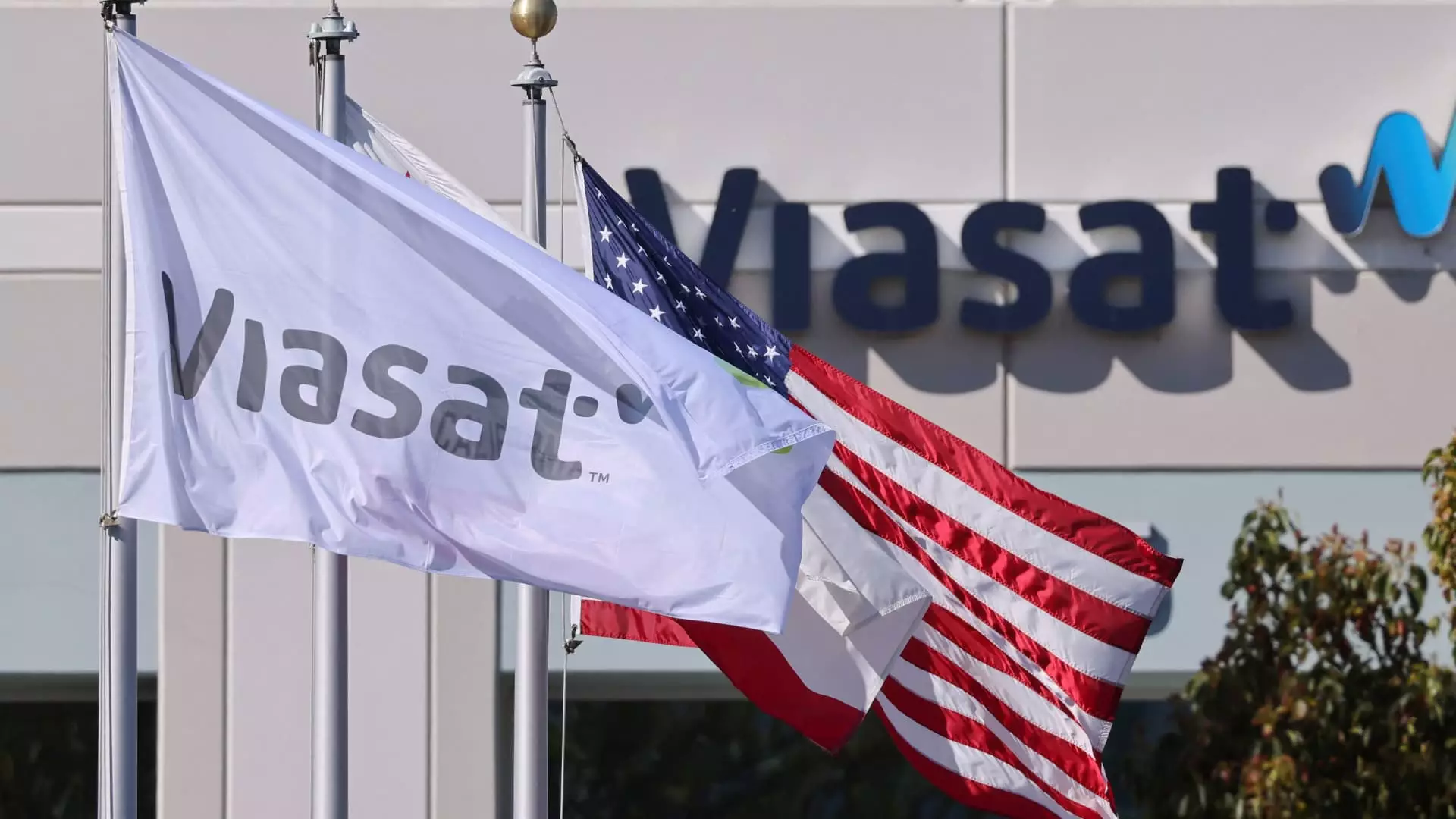In the fast-evolving landscape of satellite telecommunications, Viasat finds itself in a precarious position. While the company has recently seen a lift from Deutsche Bank’s decision to upgrade its stock rating, the broader context remains complex. One cannot ignore the aggressive competition posed by SpaceX’s Starlink. Starlink has swiftly captured a significant market share, forcing Viasat to reevaluate its strategies and, perhaps more importantly, its viability in the long run. While Deutsche Bank analyst Edison Yu acknowledges challenges in Viasat’s core services, his optimistic view hints at multiple pathways for value creation. This duality—the pressing competitive environment juxtaposed with potential growth avenues—raises critical questions about Viasat’s strategic direction.
Reassessing Value Through Asset Monetization
Yu’s analysis highlights a critical approach that could lead Viasat to redeem its current situation: asset monetization. While many investors might see this as a negative signal implying that the company needs to liquidate prime assets to remain afloat, there lies an underlying strategy that could turn this narrative into a success story. The selling of L-band spectrum and Defense and Advanced Technologies (DAT) assets could be pivotal. The question is whether Viasat can effectively capitalize on these opportunities without alienating its existing customer base or sabotaging its core business. There’s potential here, especially considering that analysts suggest these assets might command much higher valuations independently. However, every action must be taken cautiously to not only advance equity value but also to ensure that Viasat remains a robust player in the industry.
Market Dynamics and Analyst Sentiment
The current analyst sentiment surrounding Viasat paints a picture of cautious optimism, albeit coupled with significant skepticism. With only two buy ratings among nine analysts, the prevailing sentiment is neutral to bearish. The stock had already seen a decline of over 23% in the last six months, which starkly contrasts with the relatively stable S&P 500. Deutsche Bank’s revised price target of $15 offers a 53% upside, which sounds enticing, but we must question the underlying merits of that projection. Analysts have been hesitant; this hesitance is a reflection of the significant headwinds Viasat faces. Ultimately, the question boils down to whether Viasat can truly leverage its assets before the market solidifies Starlink’s dominance.
The Role of Future Ventures: The ViaSat-3 Initiative
Another aspect worth exploring is Viasat’s commitment to deploying its ViaSat-3+ series satellites, particularly F2 and F3. While some analysts remain skeptical about the efficacy and promptness of these deployments, Yu forecasts a significant financial uplift that could transform Viasat’s cash flow situation by 2027. However, this anticipated financial boon rides heavily on the execution of these projects. If mishandled, the stakes could skyrocket, resulting in not only financial loss but damage to Viasat’s reputation. The future of satellite communications hinges on these advancements, and any missteps could leave Viasat further entangled in an unyielding quagmire of market decline.
Conventional Wisdom vs. Innovative Thinking
The tension between traditional business models and innovative industry approaches is palpable in the satellite sector. Viasat’s legacy business, operating in a landscape increasingly dominated by disruptive tech like Starlink’s model, may seem archaic to some investors. However, the potential for powerful value creation exists if Viasat embarks on bold strategic maneuvers. This raises an intriguing discussion: What happens when complacency collides with a need for transformation? Is Viasat prepared to pivot, or will it remain shackled by its past failures? Only time will tell if the company’s leadership can embrace innovation while mitigating risks.
Viasat stands at a crossroads—a pivotal moment characterized by looming competition, financial challenges, and the tantalizing possibility of significant growth. The tension between risk and opportunity creates a precarious scenario for Viasat’s stakeholders, each of whom is now waiting with bated breath, counting on the company’s ability to navigate this intricate web of challenges and opportunities.


Leave a Reply